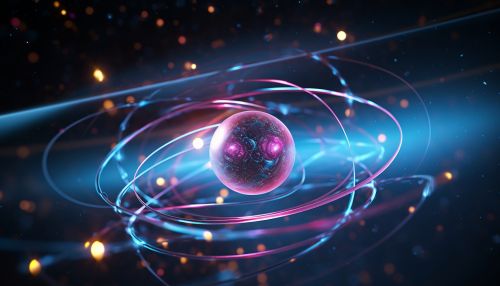Quantum Defects
Introduction
Quantum defects, also known as quantum defect theory (QDT), are a significant concept in the field of quantum mechanics. They are deviations from the ideal behavior of an electron in an atom, which can be attributed to the non-ideal nature of real potentials compared to the idealized potentials used in quantum mechanics. Quantum defects provide a deeper understanding of atomic structure and behavior, and are instrumental in the study of spectroscopy, quantum computing, and quantum optics.


Quantum Defects in Atomic Structure
In the context of atomic structure, quantum defects are deviations from the idealized model of the hydrogen atom. The hydrogen atom model, with its single electron orbiting a single proton, is the simplest and most straightforward atomic model. However, real atoms with more than one electron, such as helium, lithium, and heavier atoms, do not follow this idealized model due to electron-electron interactions and the complex nature of their potentials.
The quantum defect is a measure of the deviation of the actual energy levels of an atom from those predicted by the hydrogen-like model. It is represented by the symbol μ and is calculated using the Rydberg formula, which is an empirical formula used to predict the wavelength of light resulting from an electron moving between energy levels of an atom.
Quantum Defects and Spectroscopy
Quantum defects play a crucial role in spectroscopy, the study of the interaction between matter and electromagnetic radiation. In atomic spectroscopy, quantum defects help explain the spectral lines observed in the emission or absorption spectra of atoms. These spectral lines are a direct result of the energy level transitions of electrons within an atom, and their positions and intensities can be accurately predicted using quantum defect theory.
The quantum defect can also be used to explain the fine and hyperfine structures observed in atomic spectra. The fine structure results from the spin-orbit interaction of the electron, while the hyperfine structure results from the interaction of the electron with the nuclear spin. Both these structures can be accurately predicted using quantum defect theory, providing a deeper understanding of atomic spectra.
Quantum Defects in Quantum Computing and Quantum Optics
Quantum defects are also of significant importance in the fields of quantum computing and quantum optics. In quantum computing, quantum defects in diamond, known as nitrogen-vacancy centers, are being explored as potential qubits, the fundamental units of quantum information. These defects have unique quantum properties that make them suitable for use in quantum computing.
In quantum optics, quantum defects in materials like diamond and silicon carbide are used to create single-photon sources, which are essential for quantum communication and quantum cryptography. These defects emit single photons when excited, making them ideal for these applications.
Conclusion
Quantum defects provide a deeper understanding of atomic structure and behavior, and are instrumental in the study of spectroscopy, quantum computing, and quantum optics. They are deviations from the ideal behavior of an electron in an atom, which can be attributed to the non-ideal nature of real potentials compared to the idealized potentials used in quantum mechanics.
